
9 Great Local News Business Ideas in 2019
Diversify, diversify, diversify is the motto as local news publishers come up with creative business ideas to reach sustainability
There was a time not that long ago when local news was supported by a few simple revenue streams: advertising, subscriptions and memberships. As legacy local media organizations struggle to maintain those revenue lines, the upstart independent and nonprofit local outlets have pushed to diversify income and business models—often working in collaboration with other news organizations and support networks. So, local outlets might now make money from events, webinars, tech offerings, venue rentals… and even unexpected reptiles.
This list of great business ideas shows the growing ingenuity happening around the country – and many of these ideas can be replicated in other places. Here’s hoping that the business ideas of 2019 can evolve and grow in 2020 so that more local news outlets can reach sustainability and better serve their communities.
1. Akron Devil Strip’s Co-op Model
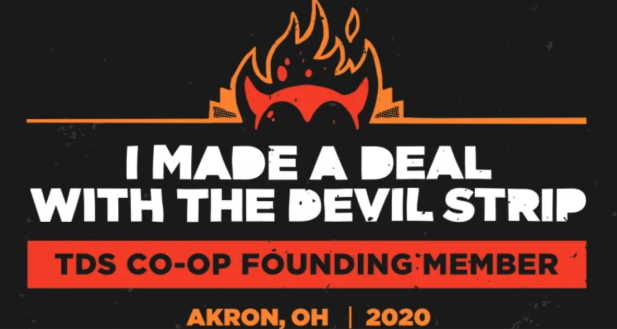
While there have been many membership programs in the past, there haven’t been a lot that actually offer ownership in the publication. Berkeleyside had a direct public offering in 2018, but The Devil Strip of Akron, Ohio, is trying out a cooperative ownership model. The monthly arts-and-culture print magazine, distributed for free, hit a wall with selling print ads and didn’t want to limit its readership with a paywall. Chris Horne, founder and publisher of The Devil Strip, studied the co-op model during his year as a JSK Fellow at Stanford University and also received a grant from the Membership Puzzle Project to implement the new business structure.
Launched on November 1 to take advantage of matching funds from NewsMatch, the co-op offering has a number of levels for readers to own a piece of The Devil Strip starting at $1 / month. When they hit $330, the reader becomes a fully vested shareholder for life, and can even help decide on topics for the magazine to cover. There are a variety of tiers for co-op members, from a basic member to the “Founder’s Circle” at $1,000 per year.
“We want to make sure we’re recruiting a diverse range of shareholders, people who run nonprofits and civic groups, neighborhood associations, people represented from every neighborhood in the city across a range of demographics,” Horne told the Lenfest Institute, which ran a detailed Solution Set case study about the publication’s business model.
2. Next City’s Pay-What-You-Wish Webinars
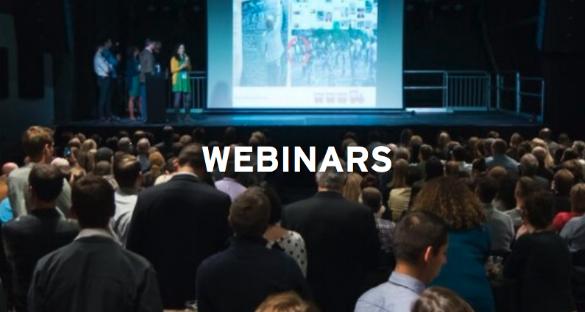
Many local news organizations have built up expertise in their markets and have offered services in communities such as video profiles of businesses or even acting as ad agencies. Next City is a Philadelphia-based nonprofit publisher with a focus on helping improve social, economic and environmental change in cities, and they have a staff and community with deep expertise.
So how could they harness that knowledge to create a new revenue stream? Pay-what-you-wish webinars. You can watch them live or archived, but just have to donate either a flat fee or a monthly recurring donation, or submit your name and email to subscribe to Next City’s newsletter. According to Next City development manager Jeff Muckensturm, the site has produced 24 webinars so far, averaging 245 attendees and bringing in $1,250 per webinar. With support from Facebook Journalism Project and the Lenfest Institute for Journalism, Next City will put the focus on Newark, NJ, in 2020, with 12 webinars focused on Newark leaders and their solutions for cities around the world.
“The pay-what-you-wish model has done wonders for converting new donors,” said Muckensturm. “We’ve increased our number of donors by 87 percent in the first ten months of the year over 2018.”
3. LATINEXT from Chicago Reporter and Univision Chicago
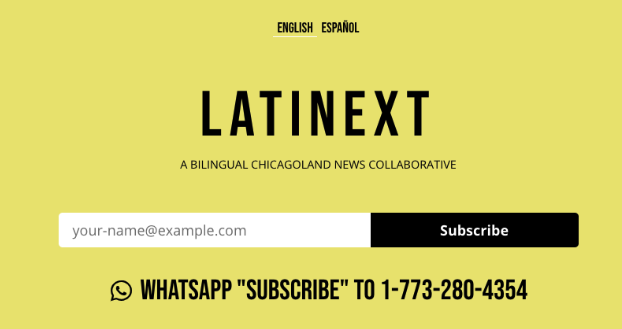
When the Tribune announced it was shutting down Spanish-language newspaper Hoy in mid-December, it was a sad day for media in the Chicago area. But it was also a day of action. Within two weeks, Chicago Reader editor and publisher Ferdando Diaz and Univision Chicago head of content Teri Arvesu banded together to announce the launch of LATINEXT, a new bilingual news source for the Chicago metropolitan area started initially on WhatsApp.
The idea isn’t to launch another newspaper but to serve the audience as a collaborative effort between the Reader and Univision, while hiring and training a new generation of reporters. The idea of LATINEXT offering “journalism as a service” has so much promise and potential, “it’s hard not to be fascinated by it,” said Chris Horne, publisher of The Devil Strip. That includes serving an audience of 2.1 million, focused on the outer suburbs, by actively engaging with them on WhatsApp, phone, email and in person. LATINEXT plans to produce three events next year.
“LATINEXT will produce a level of journalism that currently does not exist, and do it for one of the most vulnerable and underserved audiences in our region,” wrote Diaz in a post about the launch. “It will also help equip and train a new generation of journalist that blends enterprise and deep investigative journalism with cross-platform publishing techniques. Our initial focus is on mobile engagement but we want to accommodate as many platforms as possible.”
4. SpokaneFaVS’s FaVS Center

When you run an online-only publication, it helps to produce face-to-face offline events to build community, strengthen relationships and bring in new revenues. SpokaneFaVS, a nonprofit news outlet which covers religion and spirituality in Washington state, already had a Coffee Talk series of interfaith discussions, but it didn’t have a dedicated space for them. Thanks to a donation of three acres of land and a building that was formerly a church, SpokaneFaVS was able to open the new FaVS Center in June 2019.
The Center is now available for rent so people in the community can use it for their own events, including religious services, retreats and meetings, while also bringing in funding for the publication’s journalism. Already, there has been a Coffee Talk at the Center in October on “Compassion in the Face of Crime and Homelessness.”
“I’ve really seen people get to know each other,” SpokaneFaVS executive director Tracy Simmons told KHQ TV at the launch of the Center. “And walls have been broken down between Evangelicals, Muslims, and Jews and Buddhists and a variety of Christians and now we can do it in a physical building.”
5. The New Jersey Sustainability Reporting Hub
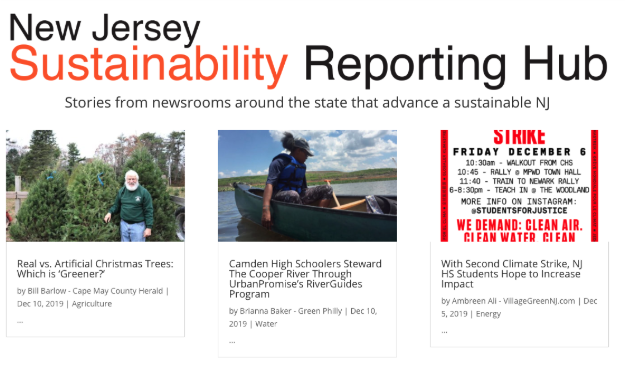
This year we’ve seen a plethora of collaborative journalism projects, including national/local partnerships and local outlets teaming up. What sets the New Jersey Sustainability Reporting Hub apart is that it has an interesting business model baked into the initiative to deepen reporting on environmental issues in the state. Four founding organizations – CivicStory, Center for Cooperative Media, Alliance for New Jersey Environmental Education, and New Jersey Higher Education Partnership for Sustainability – are contributing funding, alongside grants from place-based foundations, family foundations, corporate sponsorship and individual donors.
Curious to learn more about their model? The Hub breaks down in its initial support with a pie chart here. The funding that’s raised then goes out to eight diverse news sources around the state to pay for reporting fellows to cover environmental and sustainability issues, written through a solutions journalism lens. Recent stories include coverage of a climate strike by high school students and the push for wind energy on the Jersey coast. All the content is published via Creative Commons so anyone can publish them.
“The model strengthens local news through incentives for sustainability reporting that local newsrooms normally can’t afford, value-added learning opportunities for reporters and editors, and solutions-orientated naming/framing of serious ecological crisis and issues,” said Susan Haig, founder and creative director at Civic Story.
6. Richland Source’s Lede Ai
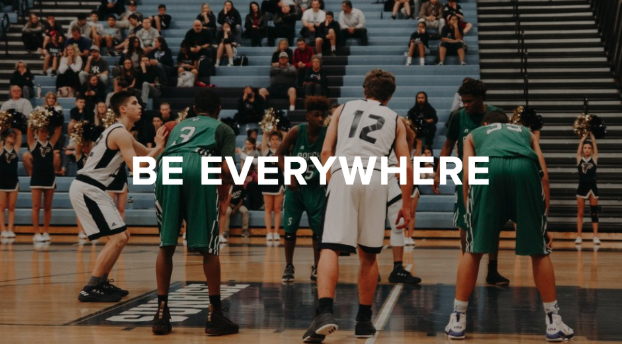
How can small and midsize local publishers cover high school sports with small staff and freelance teams? Even though high school sports are popular in many of these communities, local news can rarely cover them at all. Enter Richland Source, a local online publication in north-central Ohio, that partnered with a local artificial intelligence company, Abundat, to launch Lede Ai to help boost high school sports coverage.
By partnering with Scorestream, which provides high school sports results, Lede Ai is able to generate stories nearly right after the game ends. And the cost to publishers can be just $4 for each story. Will this technology lead to more layoffs in newsrooms around the country. No. The high school sports stories augment existing sports reporting and other coverage, creating more content and community interest for publishers. In a test last summer of Lede Ai, Richland Source had an increase of 123% in sports section pageviews, and even out-of-market stories with no art or human intervention accounted for 39% of all football-story traffic that week.
“Our mission is to give local newsrooms superpowers,” Richland Source publisher Jay Allred said in the launch post. “Lede Ai lets local sports editors shift their outlook from scarcity to abundance. They can cover dozens or hundreds of games a night now at a fraction of the cost. That serves the reader. When the revenue teams catch up and bring the opportunity to sponsors, we believe the sky is the limit.”
7. Colorado Media Project
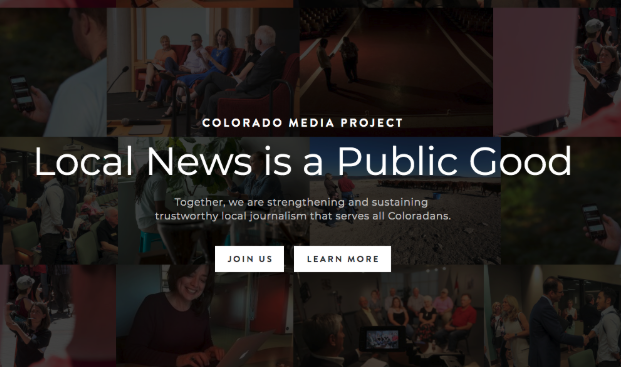
Sometimes it takes a crisis situation to bring people together. That’s what happened in Denver, where the Rocky Mountain News newspaper closed and the Denver Post was gutted by private equity firm Alden Global Capital. Out of that crisis came the birth of the Colorado Media Project, a state-wide initiative to support the entire local news ecosystem, with support from local and national foundations and the University of Denver’s Project X-ITE.
Led by Nancy Watzman, the Project includes an amazing array of research, events, funding support and more. The group’s “Public Pathways” report helped stakeholders understand the landscape of local news in Colorado, along with setting out innovative ideas to improve the ecosystem. The Project helped produce the recent Migrahack event at the University of Denver to deepen storytelling about immigration. And it’s helping to spearhead the new COLab work space for nine news outlets in Rocky Mountain PBS’ new building in downtown Denver next year.
The Colorado Media Project is a great example of how to turn disaster into opportunity for local news.
“The way they have brought together a wide array of local stakeholders to collectively examine and improve the sustainability of the state’s news ecosystem is a model that other states and regions would be smart to adapt to their own news ecosystems,” said Gonzalo del Peon, associate at the American Journalism Project. “Additionally, user research – studying Coloradans and their specific information needs – has been central to the project, and anyone looking to improve local news can learn from putting their community members (and their actual needs and perspectives) first.”
8. Racine County Eye’s Eye on Employment
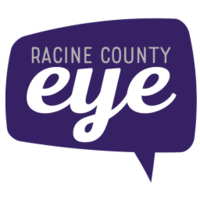
Many small communities have to deal with a lack of jobs for people in the area and woo companies to their vicinity. But for Racine county, Wisconsin, the opposite problem is true. The new Foxconn manufacturing plant will be built in the county, and there are thousands of jobs coming. But who will fill those jobs?
Racine County Eye publisher Denise Lockwood decided that rather than just launch a typical job board online, she would create an entire section devoted to jobs, Eye on Employment. The section includes job listings that run as content, along with tips for getting jobs, a targeted email newsletter and even a “Help Wanted” podcast.
“No one else is deep-diving into these topics like we are doing,” said Lockwood. Racine County Eye won a LION Publishers Award for Business Idea of the Year for Eye on Employment. The judges said that the idea was an “innovative way to make up for what the industry lost in terms of classifieds, and the results appear to be positive.”
9. Block Club Chicago’s Gator Watch T-Shirts
One of the best parts of local news is when something unexpected happens in the community, leading people to come together in surprising ways. For Chicago, it was the sighting of an alligator in Humboldt Lagoon, a place not known for gators. And for news startup Block Club Chicago, it was the chance for an unconventional merchandise hit.
“Our latest creative — and incredibly successful — fundraising idea came after our reporter Mina Bloom broke one of the biggest stories of the summer,” said Stephanie Lulay, managing editor and co-founder of Block Club Chicago. “A wayward alligator was staking out in the middle of a Chicago lagoon and no one had any idea how it got there. Soon, the Gator Watch story captivated the city, and we saw an opportunity.”
There was an online poll to name the alligator, with “Chance the Snapper” winning out. The publication tapped local artist Ryan Duggan to create “Gator Watch” t-shirts, making sure that readers knew that 100% of the proceeds of the shirt would go into the news operation. Block Club Chicago sold 4,000 shirts at $25 each ($100,000 in revenue!), which was a big boost to the operation. Now, the site can boast that it’s had 20 million page views, 8,000 paid subscribers and 4,000 gator shirts sold in its first 14 months of operation.
A special thanks to all the people in the local news ecosystem who suggested ideas for the year-end roundups, especially Mara Jezior at INN, who helped shepherd more ideas my way!
Mark Glaser is executive editor of MediaShift.
You May Also Be Interested In…
Recent Content
-
Journalismarticle ·
-
Journalismarticle ·
-
Journalismarticle ·





